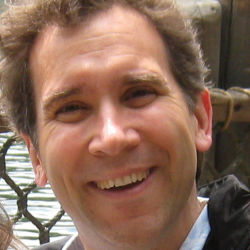
About a month ago, I blogged on the impact of the Advanced Placement Computer Science (APCS) exam on undergraduate enrollment in computing. I cited some statistics about APCS that I have since discovered were wrong. In particular, I claimed that there were 26 states whose total enrollment in APCS over the last 25 years has not been over 200. That's wrong.
Barb Ericson, a Board member of the Computer Science Teacher's Association (CSTA), kindly gave me a spreadsheet with data from all 50 states over the last 10 years. Now I can provide some more accurate observations.
- In the 10 year window that Barb gave me, there 9 states whose total number of APCS seats (a student took the APCS Level A exam) is below 100. Those states are (from fewest taking to most taking) are Montana (at 25 students from 1998 to 2008), North Dakota, South Dakota, Wyoming, Nebraska, Oregon, Kansas, Alaska, and Mississippi (at 198).
- Those are also some of our least populous states, so those low numbers are not surprising. There are fewer kids there (presumably) to take CS (though probably more than 200 high school kids total…) What if we balance for state population? Barb looked up the population in the state (total, not just of high school students, so it's only a rough scaling factor) and came up a measure of tests taken in 2008 per million people, sortof a seats per capita. There, Louisiana is lowest, with only 1.36 tests taken per million people. Montana, Wyoming, and Idaho are tied at 2.
- There are 18 states with less than 20 seats (on the 2008 exam) per million, which I'm using as a rough benchmark of "There's one APCS teacher teaching one class of CS students per million people." Some of those were pretty surprising to me: Iowa at 7 (21 students took it, with roughly 3 million people), Oregon at 8.78, Arizona at 10.8, Utah at 12.6, and West Virginia at 13.3. Just outside my metric (tied at 21) are New Mexico, Michigan, and Minnesota.
- Who leads in producing APCS students? Maryland is the highest seats-per-million at 160. The rest of top 10 are Texas, Virginia, Washington DC (51 students for 600K population), New Jersey, Connecticut, Georgia, Hawaii, California, and New York.
Overall, 15,014 students took the APCS Level A exam in 2008. Just shy of half of those students (48%) came from three states: California, Texas, and New York.
In contrast, in 2008, 222,835 students took the AP exam for Calculus (Level AB). 57,758 took the AP exam for Physics Level B. If we were to assume that high schools were perfect economic beings, and the number of those taking the test is a true indication of the importance of the field, then CS is 6% as important as Calculus, and 26% as important as Physics.
The College Board has found in its studies that 58% of high school students who take an APCS course end up taking a computer science course in college, and 19% of those pursue a computing degree – regardless of whether the students even take the exam. In comparison, only 28% of high school students who do not take any APCS exam go on to take a computer science course, and only 3% of those students pursue a computing degree.
While my data were wrong in my older blog post, the conclusions still seem sound. Most students get no access to the APCS course at all. Less than one APCS teacher per million residents in 18 states is shockingly low. Further, students who take the APCS course tend to go on for more computer science — at a higher rate than many schools pass students from CS1. The bottom line is that the APCS is not our problem. Lack of high school computer science is a much more significant problem.



Join the Discussion (0)
Become a Member or Sign In to Post a Comment